Intel Expands 8th Gen Core: Core i9 on Mobile, Iris Plus, Desktop, Chipsets, and vPro
by Ian Cutress on April 3, 2018 3:01 AM ESTThe GIGABYTE H370N-WiFi
One of the motherboards we were sampled early was the GIGABYTE H370N-WiFi. This is GIGABYTE's latest mini-ITX motherboard, and in this case using the H370 chipset - traditionally GIGABYTE's H-series mini-ITX boards implement additional features, such as HDMI 2.0, and in this case, Wi-Fi.
The initial viewing of the board is one implemented more in function than overall style. The four-phase power delivery has a heatsink, the CPU is powered by an 8-pin 12V header, and the full length PCIe slot is shielded. GIGABYTE has two full-length DDR4 slots on this model, using double sided latches, and there are four SATA ports on the right hand side of the board out of a possible six that the chipset supports.
For storage, we get an M.2 2280 slot that sits above the chipset heatsink on the front, and another on the rear:
The two key parts on this motherboard that are going to be a little interesting start with the HDMI 2.0 implementation.
Here GIGABYTE is using the MegaChips MCDP2800 chip as an LSPCon to enable HDMI 2.0 from the processor. This is fairly common for HDMI 2.0, although due to the added LSPCon cost, we still only see it on a few motherboards - mostly GIGABYTE boards.
The other thing to note will be the Wi-Fi implementation. As the H370 chipset will support a native wireless solution, it all comes down to which companion RF model GIGABYTE has chosen. A quick look in the device manager shows this:
Here Intel is using the AC-9560, which is Intel's 2x2 802.11ac Wave 2 (160 MHz) solution - the high cost one.
Another feature on the new motherboards will be the USB 3.1 Gen 2 (10 Gbps) support. Here we see GIGABYTE not bothering with the fastest USB 3.1 implementation - all the ports here are USB 3.1 Gen 1 (5 Gbps) standard - even the port being enabled via a Type-C redriver. This means that this board could be seen as just a refresh of the 200-series version, with only the chipset changed to support the new processors. The motherboard does not have additional front panel headers for 10 Gbps either, meaning that this board uses exactly zero of the four that the chipset supports.
Elsewere on the board we spot the dual NICs, powered by Intel I219-V and Intel I211-AT controllers.
The audio, despite being a 3-plug stack, is powered by the Realtek ALC1220 codec.
In our box with the board, aside from the usual CD/manual/IO shield, we also got two SATA cables and a pair of Wi-Fi antenna. Nothing overly complex.


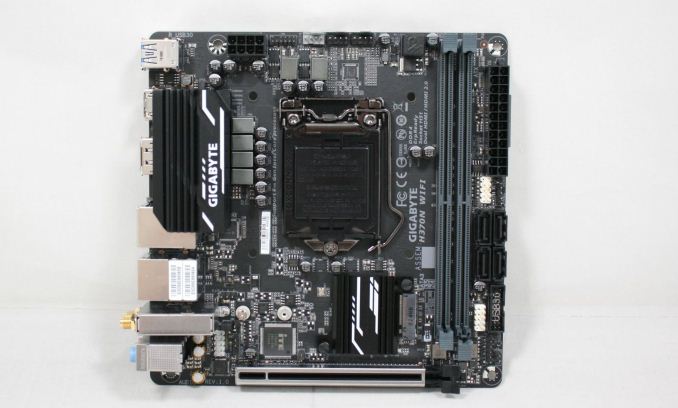
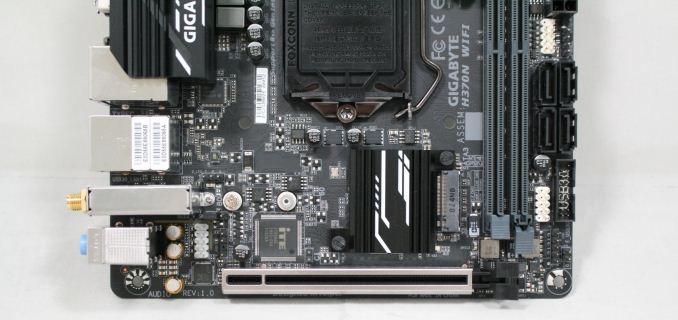
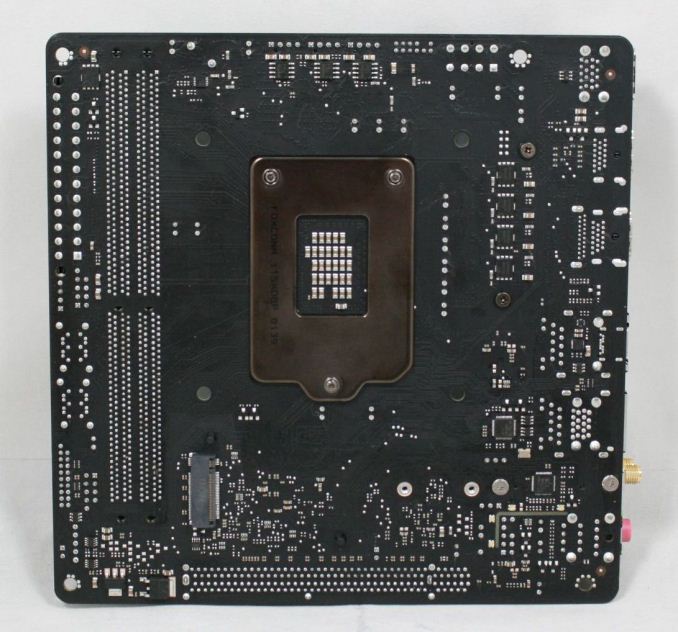
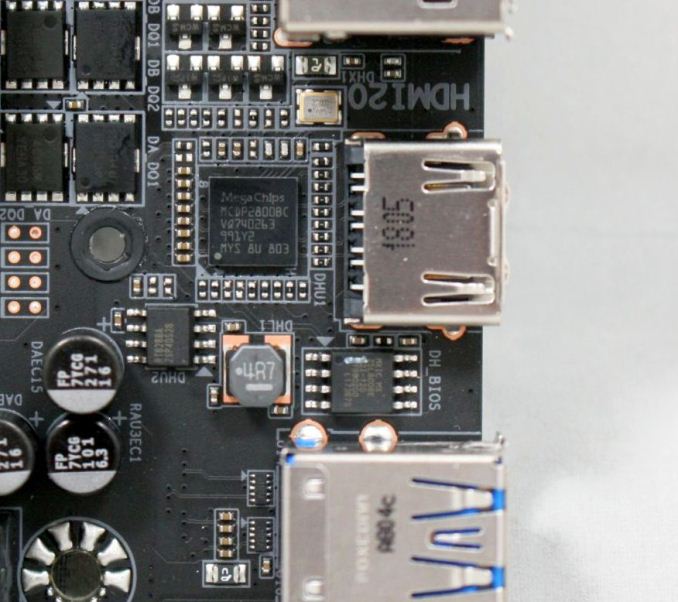
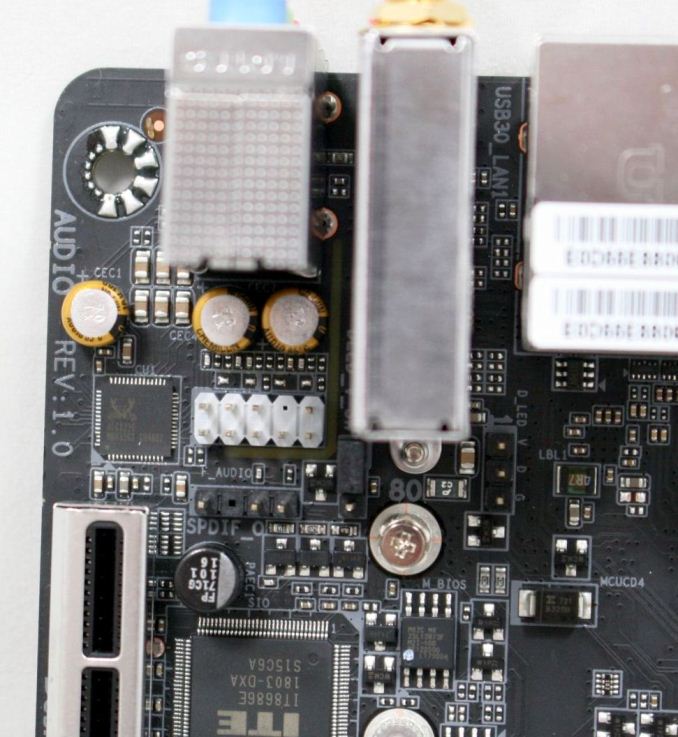
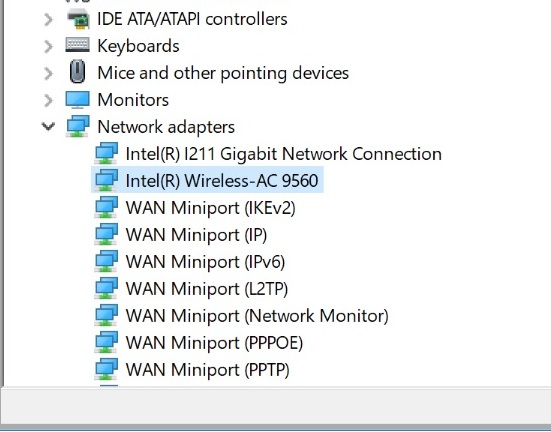

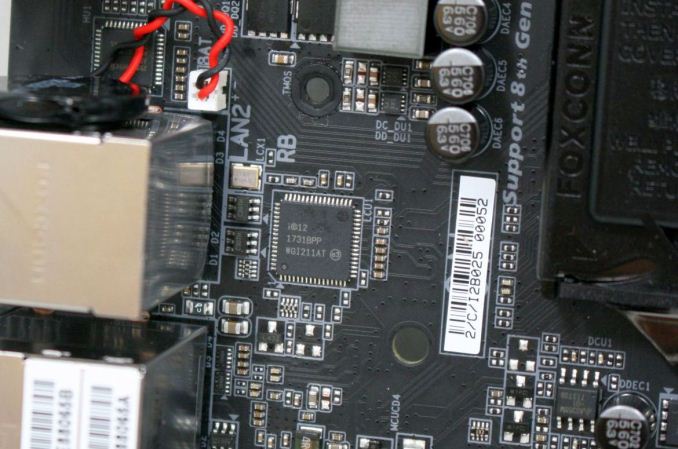

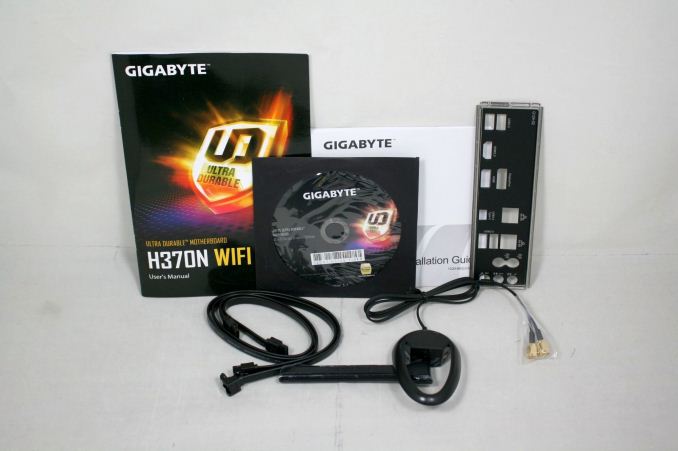














123 Comments
View All Comments
close - Wednesday, April 4, 2018 - link
If Apple does move to ARM (in a few years and only for lower powered models) the Y CPUs are the first to take the hit. There are very few ultraportables so successful to justify Intel's continued research in this. They already go out of mobile for the same reason, it's likely that in the future they will get out of the (ultra?) low power parts (under 10W).Sonic01 - Friday, April 6, 2018 - link
yeah that's what i was thinking... is there any news on the release date for these? I've just seen rumours of "late 2018", so I can only assume december...HStewart - Wednesday, April 4, 2018 - link
Actually an year and half since Q3 2016 - but it looks like 8th gen u series can be used in ultra lightsSonic01 - Friday, April 6, 2018 - link
yeah i realised after i posted but still. i know the U series are being used in ultra lights... but they still arent as ultra light as Y's.... all the U based ultrabooks start at 1.4KG and have cpu fans, my core Y ultrabook is 1KG and has no fans... oh well, will just have to keep waiting...Kakti - Sunday, April 8, 2018 - link
My Acer Switch Alpha 12 uses an i5-6200u, weighs 1.28 kg and is passively cooled. There's a few ultrabooks/tablets/2 in 1's that use u-series processors and no fans, but yeah they are rare. Personally I'd rather have a U processor for the added unmph...the 4.5w Y's will struggle to do much more than surf the web. Even high resolution video decoding can push past a Y processor's limits.serendip - Tuesday, April 10, 2018 - link
The Y segment is probably better served by much cheaper Atoms. I've run video transcodes on an Atom Windows tablet and it barely gets warm. I'd rather have decent sustained performance instead of a burst of speed that crashes hard from thermal limits.Alistair - Tuesday, April 3, 2018 - link
It's not even the products exactly that disappoint. The marketing is so bad....Just make it simple like Ryzen. No i5+, i5 means 6 core, 4 core hyper... I build computers all the time and I just feel tired reading that slide deck. Why should I memorize all that. Who cares...
satai - Tuesday, April 3, 2018 - link
AMD Ryzen 7 2700U - 4C/8TAMD Ryzen 7 1700(X) - 8C/16T
AMD Ryzen 7 2700(?) - probably 8C/16T
(Intel segmenting is a mess when considering features (ECC, management...) but why to bash them for C/T thread count that is pretty reasonable?)
Ratman6161 - Tuesday, April 3, 2018 - link
Also Ryzen 5 even in the desktop line has some 4C and some 6C that are all Ryzen 5Alistair - Tuesday, April 3, 2018 - link
When you buy Ryzen, you just buy the number of cores you want. Ignore everything else.The reason why Ryzen 5 1400 is a "5" is because if they called it a "3", that wouldn't make sense as it is about the same as an i7-7700. I think the Ryzen "5" confusion is a response to Intel's marketing more than anything else.